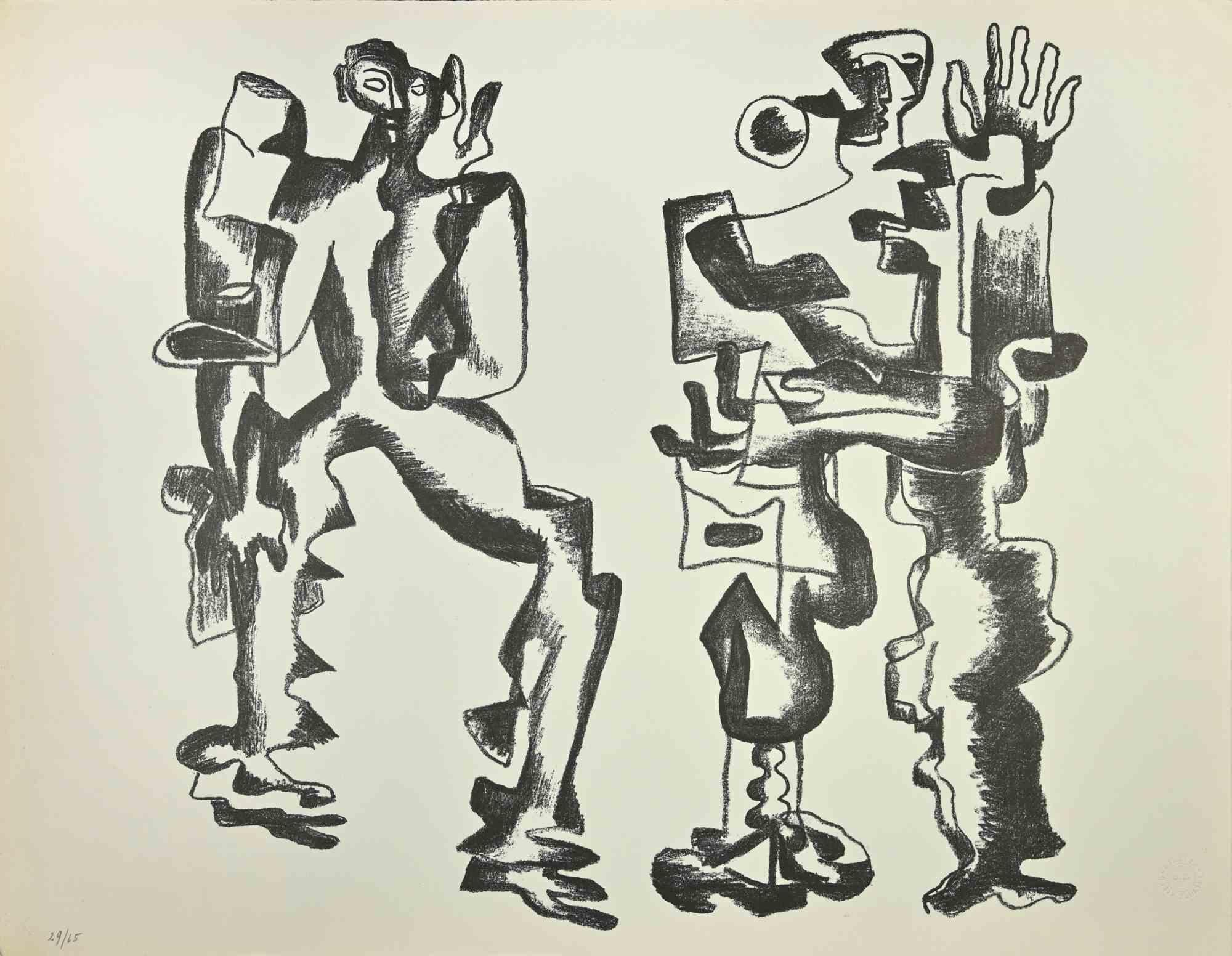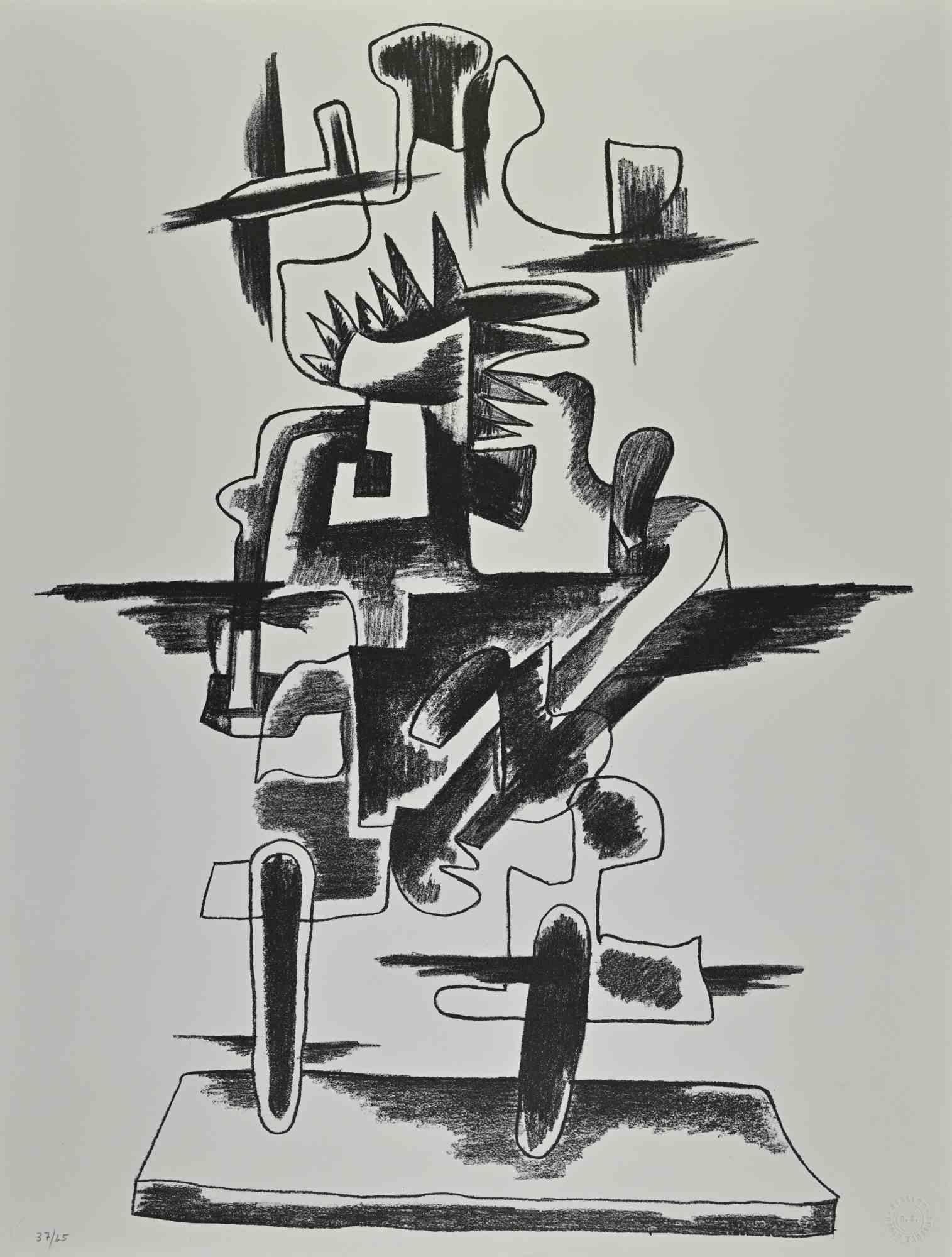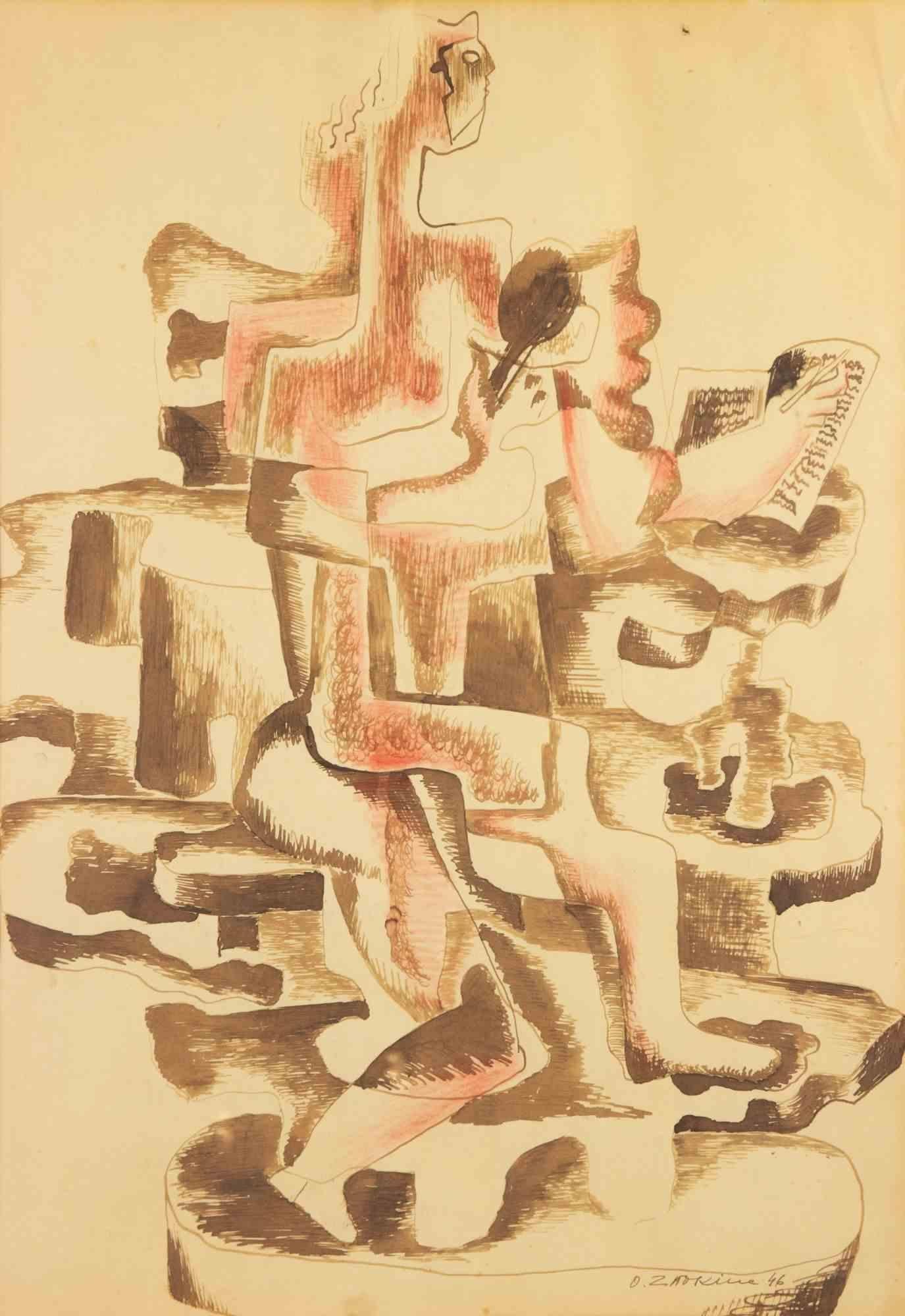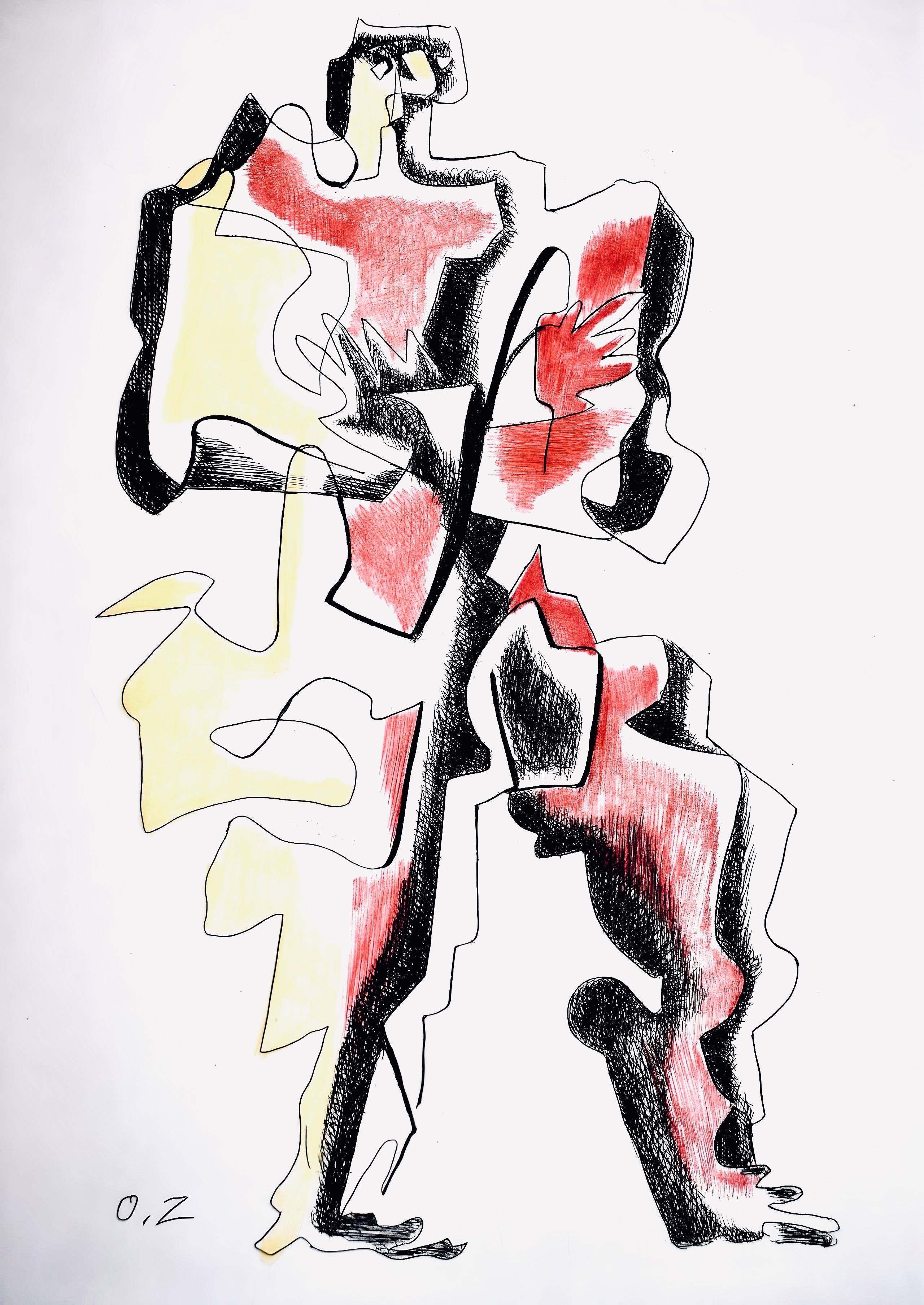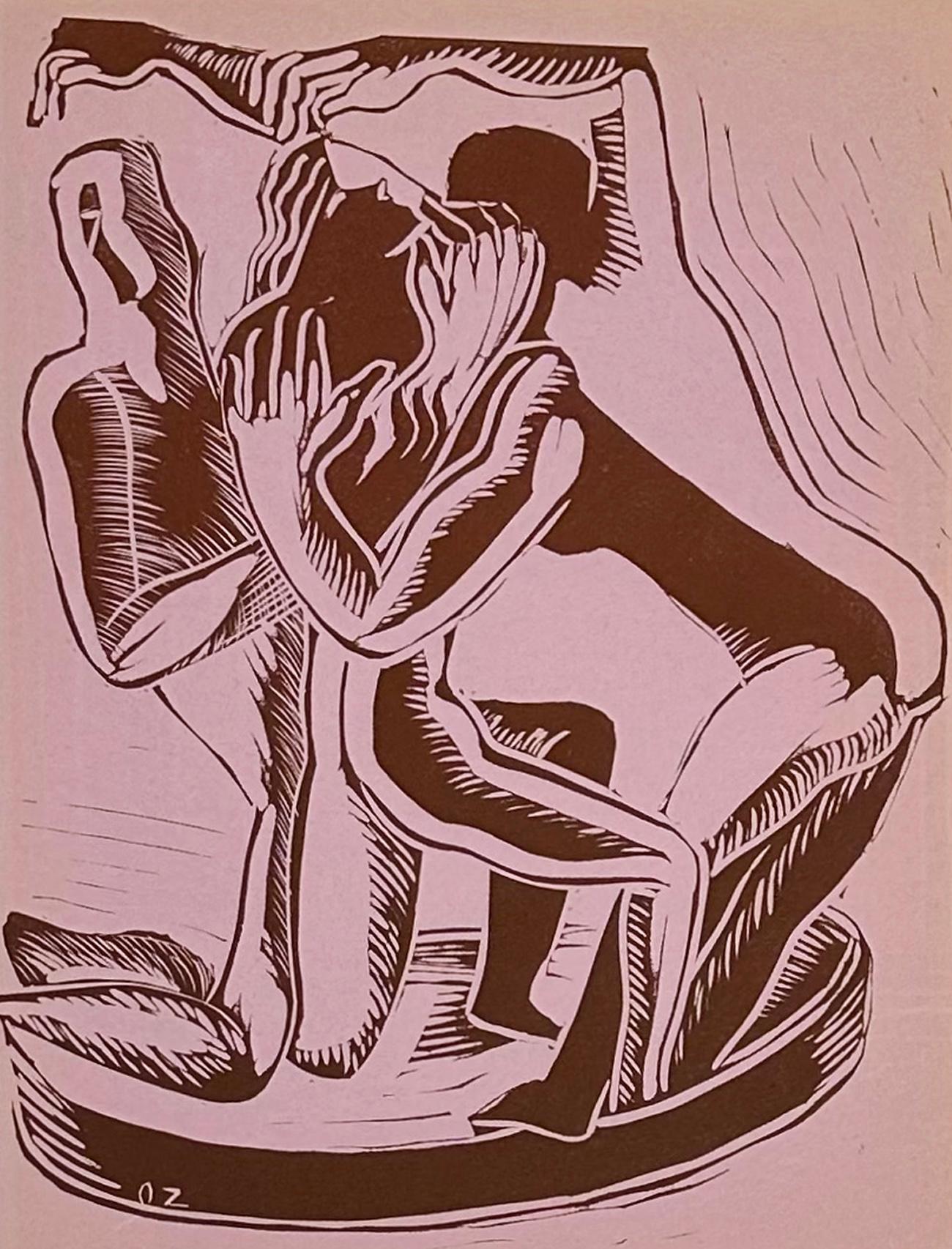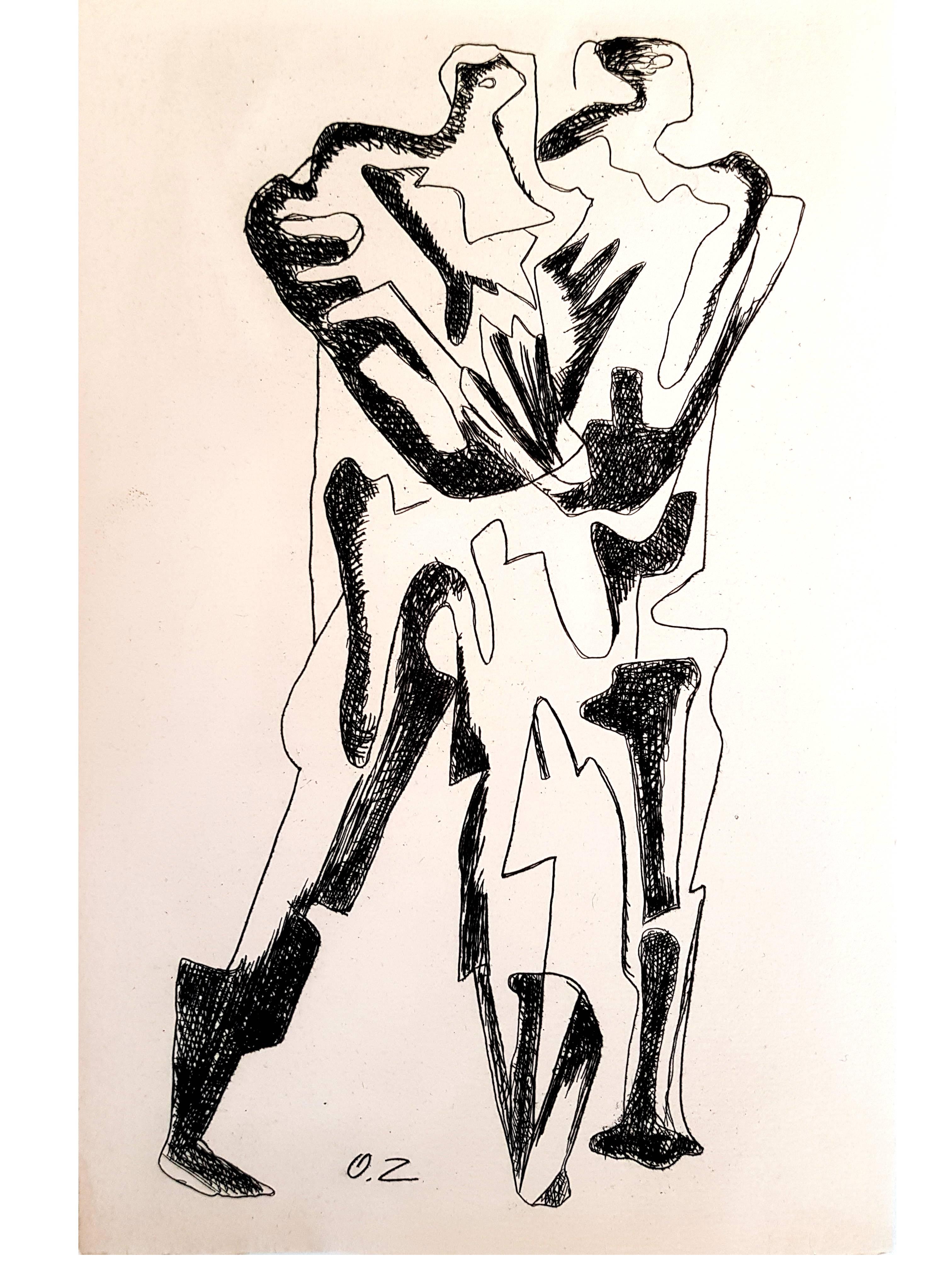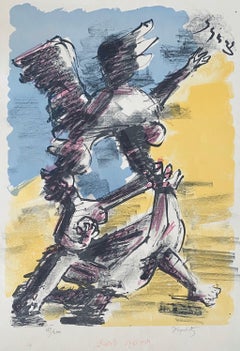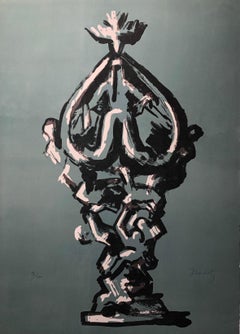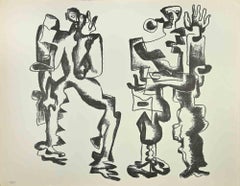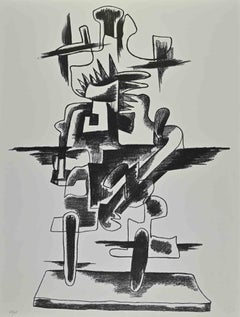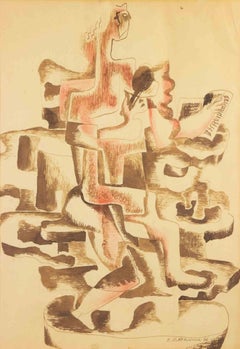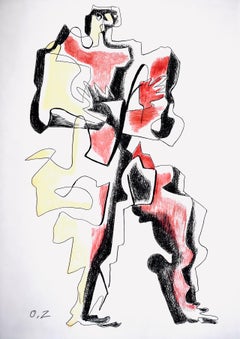Ossip ZadkineLarge Cubist Modernist Color French Lithograph Zadkine Figures La Famille1960
1960
About the Item
- Creator:
- Creation Year:1960
- Dimensions:Height: 30 in (76.2 cm)Width: 22.25 in (56.52 cm)
- Medium:
- Movement & Style:
- Period:
- Condition:minor wear. please see photos. this is being sold unframed without the mat for shipping.
- Gallery Location:Surfside, FL
- Reference Number:1stDibs: LU38216597182
Ossip Zadkine
Ossip Zadkine was a relentless, unclassifiable and prolific artist. Today, we can count more than 612 sculptures and a large number of works on paper; 765 gouaches and drawings, as well as 200 lithographs and etchings. The exhibition of his works in his Parisian studio of the rue Rousselet on May 20th, 1920, marked the beginning of a long series of shows, including more than 105 solo exhibitions during his lifetime in Europe; but also, in the United States and in Japan. Truly, a man of the world, Zadkine lived in Vitebsk, Belarus, Sunderland and London in England and Paris, Bruniquel, Les Arques in France. During the First World War, he enlisted voluntarily and was posted to the Russian ambulance corps in Champagne in 1916. During the Second World War, he fled to New York City and lived there from October 1941 to September 1945. Zadkine also traveled to many places including Belgium, the Netherlands, Greece, Italy, Japan, America, amongst others. Zadkine collaborated with many people on diverse occasions. He collaborated with architects such as Adrien Blomme, Joseph André and Hugh Maaskant; decorators such as Marc du Plantier and André Groult; poets such as Claude Aveline, Robert Ganzo, Pierre Béarn and others. Zadkine was close to such important individuals as artists (Marc Chagall, Henry Moore, Tsuguharu Foujita, Amedeo Modigliani and others; thinkers, founders, collectors, doctors, industrialists, businessmen worldwide. He gathered his memoirs in his book, Le Maillet et le Ciseau, which he started writing in 1962.
- ShippingRetrieving quote...Shipping from: Surfside, FL
- Return Policy
More From This Seller
View All1960s Modern Figurative Prints
Lithograph
1960s Cubist Abstract Prints
Lithograph
20th Century Modern Figurative Prints
Lithograph
20th Century Expressionist Abstract Paintings
Mixed Media
1960s Cubist Abstract Prints
Lithograph
Mid-20th Century Abstract Paintings
Gouache, Pen
You May Also Like
Mid-20th Century Cubist More Prints
Lithograph
Mid-20th Century Cubist More Prints
Lithograph
1940s Cubist Figurative Drawings and Watercolors
Mixed Media
1960s Modern Figurative Prints
Lithograph
1930s Modern Abstract Prints
Linocut
1960s Modern Figurative Prints
Etching
